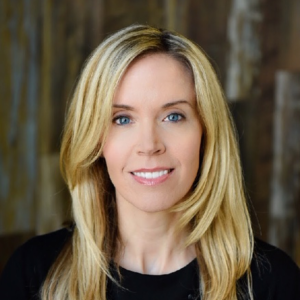Today, I am joining Eric Sydell, EVP of Innovation at Modern Hire, on a webinar to discuss our latest research on talent analytics. We will be sharing the challenges with data and how companies can use a framework to turn goals and metrics into actions.
One of the topics we will cover is efficiency. Sixty-two percent (62%) of companies state that they are facing pressure to fill positions quickly. Talent acquisition professionals are recruiting, but with limited resources and, in many cases, limited staff. Forty-six (46%) of companies are experiencing layoffs within their talent acquisition teams. Some companies have eliminated specialist roles that may include candidate experience managers and data scientists, while others have reduced the number of coordinators to help with administrative tasks.
Goals
Talent acquisition professionals are under pressure to balance a heavy workload without support, and they must remain flexible. One in four companies stated that it still takes over three months to fill positions.
Metrics
Efficiency metrics are the most common and straightforward metrics that organizations track. Yet, they can vary greatly throughout the organization. Some metrics include:
- Time to apply: The time it takes from when candidates learn about an opportunity to when they apply for a job.
- Time to interview: The time it takes from when candidates apply to when they get interviewed.
- Time to fill: The time it takes from when a job is posted to when it is filled by a candidate.
- Conversion rates: The rate at which candidates convert from different stages in talent acquisition, from learning about a company to applying for a job, scheduling an interview, and accepting an offer.
- Recruiter Productivity: The productivity of recruiting teams and time spent on administrative tasks, including finding candidates and scheduling calls and interviews.
Insights
Once companies collect metrics on efficiency, they must understand what impact this has on talent acquisition efforts and why efficiency is a challenge. Below are some considerations to gain better insights on efficiency gaps.
- Identifying where talent acquisition slows down: Companies should look closely at where inefficiencies occur and if hiring managers or other key stakeholders are involved. Are there delays with scheduling calls and interviews or with communication between recruiters and hiring managers? Understanding where and why talent acquisition is slowing down can help companies improve efficiency.
- Understanding decision-making: Talent decisions are made differently at every organization. Companies should look at the data they have on hiring decisions and determine how these decisions are made and based on intuition or accurate data.
- Communicating with candidates more effectively: Inefficiency is often the result of poor communication with candidates. By improving candidate engagement and outreach throughout the process, companies can shorten hiring times.
Action Steps
Companies that gain insight into their efficiency gaps can take the following actions:
- Invest in candidate-first solutions: Candidates want simple and intuitive solutions that provide better engagement and efficiency. Companies that consider solutions designed with the candidate in mind will see overall improvements to efficiency gaps.
- Create a seamless experience: Companies must ensure that their hiring solutions are seamless, integrate with the ATS, and not make candidates go from place to place to click links, enter information, or re-enter information to complete stages. Companies must ask for is job-relevant or otherwise necessary and predictive of job success and provides results and recommendations to hiring teams in a cohesive, logical way.
- Invest in scheduling: Interview scheduling takes recruiters, on average, sixteen hours a week to complete. Companies need a more strategic approach to scheduling and should consider solutions that automate the scheduling process to save time and improve recruiter productivity.
The research report covers candidate experience, DEI, efficiency, and quality of hire. I hope you can join us today!
Author
-

Madeline Laurano is the founder and chief analyst of Aptitude Research. For over 18 years, Madeline’s primary focus has been on the HCM market, specializing in talent acquisition and employee experience. Her work helps companies both validate and re-evaluate their strategies and understand the role technology can play in driving business outcomes. She has watched HCM transform from a back-office function to a strategic company initiative with a focus on partnerships, experience and efficiency. Before founding Aptitude Research, Madeline held research roles at Aberdeen, Bersin by Deloitte, ERE Media and Brandon Hall Group. She is the co-author of Best Practices in Leading a Global Workforce and is often quoted in leading business publications including The Wall Street Journal, The Boston Globe, Yahoo News, The New York Times and The Financial Times. She is a frequent presenter at industry conferences including the HR Technology Conference and Exposition, SHRM, IHRIM, HCI’s Strategic Talent Acquisition Conference, Unleash, GDS International’s HCM Summit, and HRO Today. In her spare time, she is a runner, an avid sports fan and juggles a house full of boys (where a spontaneous indoor hockey game is not unheard of!).
Recent Posts
